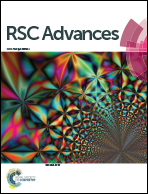Highly fluorescent QD probes labeling hepatocellular carcinoma cells
Abstract
Highly fluorescent quantum dot (QD) probes have attracted great attention in the field of cancer detection. But before they can be applied in clinical practice, further work is required. In this study, QDs were prepared by chemical method and the obtained QDs were characterized by ultraviolet irradiation; the bioconjugation effects between QDs and α-fetoprotein (AFP) monoclonal antibodies were analyzed by fluorescence (FL) imaging and Coomassie Blue assay; the diameter of the obtained QD probes were measured by transmission electronic microscopy (TEM); size distribution and zeta potential were studied by a laser diffraction particle size analyzer; the optical properties of the QD probes were analyzed by UV-Vis absorption spectrometry and fluorescence spectrometry; the targeting capability of the obtained probes was evaluated by labeling Hepatocellular Carcinoma (HCC) cells. The results showed that QDs had a high FL property, AFP monoclonal antibodies could steadily couple with QDs; the diameter of QDs became slightly larger after bioconjugation, and the hydrodynamic size of QDs also increased from ca. 10 nm to about 95 nm after QD coupling with antibodies. The absorption properties of QDs did not remarkably change before and after combination with antibodies; a blue shift of about 4 nm to 5 nm of the FL peaks occurred after QD coupling with AFP antibodies, which is probably mainly attributed to the electronegativity increase of the QD surface due to amine groups in the PEG molecules; and the formed FL probes could specifically and accurately target the AFP antigen in HCCs. These FL probes could be designed and constructed according to the clinical practice needs.


 Please wait while we load your content...
Please wait while we load your content...